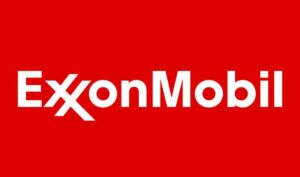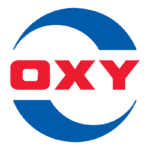Exxon Mobil Corp. (XOM) Stock Analysis

Exxon Mobil Corporation (XOM) Stock Analysis
Sector: Energy
Industry: Integrated Oil & Gas
Analysis Date: February 18, 2025
1. Company Overview
Exxon Mobil Corporation is one of the world’s largest publicly traded oil and gas companies, with a diversified portfolio spanning upstream, downstream, and chemical operations. The company is known for its scale, operational efficiency, and long-term focus on generating strong free cash flow. Exxon Mobil continues to invest in technology and innovation to drive operational improvements and manage energy transition challenges while delivering consistent returns to shareholders.
Key Business Segments:
- Upstream Operations: Exploration and production of oil and natural gas across various regions globally.
- Downstream Operations: Refining, marketing, and distribution of petroleum products, as well as chemical manufacturing.
- Integrated Operations: Combining upstream and downstream activities to optimize value creation and mitigate volatility in energy markets.
Strategic Initiatives:
- Operational Efficiency: Enhancing cost management and capital allocation to drive higher margins and robust free cash flow.
- Energy Transition: Investing in lower-carbon technologies and innovative solutions to address environmental challenges while maintaining competitive advantages in traditional energy markets.
- Global Diversification: Expanding geographic presence and balancing portfolios to manage regional and commodity-specific risks.
2. Financial Performance
a. Revenue & Growth
- TTM Revenue: $343.39 Billion
- Revenue Growth (YoY): +1.51%
Analysis:
Exxon Mobil’s massive revenue base reflects its diversified operations. Although revenue growth has been modest recently, cyclical recoveries and improved pricing in the energy markets contribute to its solid performance over time.
b. Profitability
- TTM Net Income: $33.68 Billion
- EPS (TTM): $7.84
- PE Ratio: 13.81 (Forward PE: 14.93)
Analysis:
The company’s profitability is strong, with attractive earnings relative to its share price. A trailing PE of 13.81 and a forward PE of 14.93 signal steady earnings performance and modest growth expectations, underscoring Exxon’s value investment appeal in a cyclical industry.
c. Margins
- Gross Margin: ~30.38%
- Operating Margin: ~12.90%
- Profit Margin: ~9.81%
Analysis:
Exxon Mobil’s margins reflect the inherent cost structure of the oil and gas sector. While gross margins remain modest due to high commodity costs, the company’s focus on operational efficiency helps maintain healthy operating and profit margins.
d. Free Cash Flow
- Free Cash Flow (TTM): $30.72 Billion
- Free Cash Flow Per Share: $7.06
Analysis:
Robust free cash flow generation provides Exxon with the flexibility to invest in capital projects, pay dividends, and repurchase shares, reinforcing its strong balance sheet and shareholder return strategy.
3. Balance Sheet & Liquidity
- Cash & Cash Equivalents: $23.03 Billion
- Total Debt: $41.71 Billion
- Net Cash Position: -$18.68 Billion (Net Debt per Share: -$4.29)
- Book Value Per Share: $60.58
- Working Capital: $21.68 Billion
Analysis:
Exxon’s balance sheet remains robust with significant working capital and a solid book value per share. Although the company carries moderate debt, its strong operating cash flows and asset base support its financial strength.
4. Valuation
- PE Ratio (TTM): 13.81
- Forward PE Ratio: 14.93
- PS Ratio: 1.35
- PB Ratio: 1.79
- P/FCF Ratio: 15.34
- PEG Ratio: 1.87
Analysis:
Exxon is attractively valued relative to its earnings and cash flow metrics. With a low PE ratio and competitive PS and PB ratios, investors may view Exxon as a value play in the energy sector. The PEG ratio of 1.87 indicates that, despite being cyclical, the company’s growth prospects are reasonably priced.
5. Market Performance
- 52-Week Range: $102.65 – $126.34
- Last Close Price: $108.24
- Beta (5Y): 0.88
Analysis:
The stock’s performance over the past year has been relatively stable, with low volatility (beta of 0.88) compared to the broader market. Modest price appreciation of approximately +6.81% over the past year reflects cautious optimism amid the cyclical nature of the energy sector.
6. Dividend & Shareholder Returns
- Dividend Per Share: $3.96
- Dividend Yield: 3.66%
- Dividend Growth (YoY): 4.30%
- Payout Ratio: 50.51%
- Buyback Yield: -6.07%
- Shareholder Yield: -2.41%
Analysis:
Exxon’s dividend yield of 3.66% and steady dividend growth provide an attractive income component for investors. Although the payout ratio is relatively high, the company’s consistent dividend payments underscore its commitment to returning capital to shareholders.
7. Risks & Considerations
- Commodity Price Volatility: Exxon’s earnings are highly sensitive to fluctuations in oil and natural gas prices, which can be influenced by geopolitical events, supply/demand dynamics, and global economic conditions.
- Regulatory and Environmental Risks: Increased regulatory scrutiny and environmental policies aimed at reducing carbon emissions may impact Exxon’s operations and capital expenditure requirements.
- Global Economic Conditions: Economic downturns or recessions can lead to lower energy demand, adversely affecting revenues and profitability.
- Capital Intensity: The high capital expenditure requirements and ongoing investments in technology and energy transition initiatives may pressure cash flows in the short term.
8. Conclusion
Pros:
- Attractive Valuation: With a low PE ratio and favorable PS/PB metrics, Exxon is valued attractively relative to its earnings and cash flow.
- Solid Free Cash Flow: Robust free cash flow generation provides financial flexibility to support dividends, share repurchases, and capital investments.
- Steady Dividend: A dividend yield of 3.66% coupled with consistent dividend growth makes Exxon appealing for income investors.
- Strong Operational Efficiency: Despite commodity price volatility, Exxon’s focus on cost management supports stable operating and profit margins.
Cons:
- Commodity Price Risk: The company’s performance remains highly dependent on volatile oil and gas prices, which can affect margins and earnings unpredictably.
- Regulatory & Environmental Challenges: Ongoing regulatory changes and environmental initiatives could increase costs and affect long-term profitability.
- High Capital Expenditure: The capital-intensive nature of the energy industry may pressure near-term cash flows, especially during downturns.
Final Note:
Exxon Mobil stands as a leading integrated energy company with a diversified portfolio, solid free cash flow, and a commitment to returning capital to shareholders. While exposure to commodity price risks and regulatory challenges remains, its attractive valuation and steady dividend yield make it an appealing option for long-term investors seeking exposure in the energy sector.
Disclaimer:
This analysis is for informational purposes only and does not constitute investment advice. Investing involves risks, including the potential loss of principal. Past performance is not indicative of future results. Please consult a qualified financial advisor before making any investment decisions.






